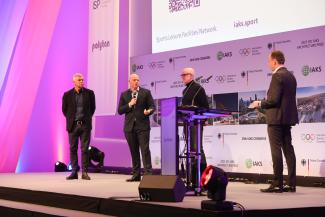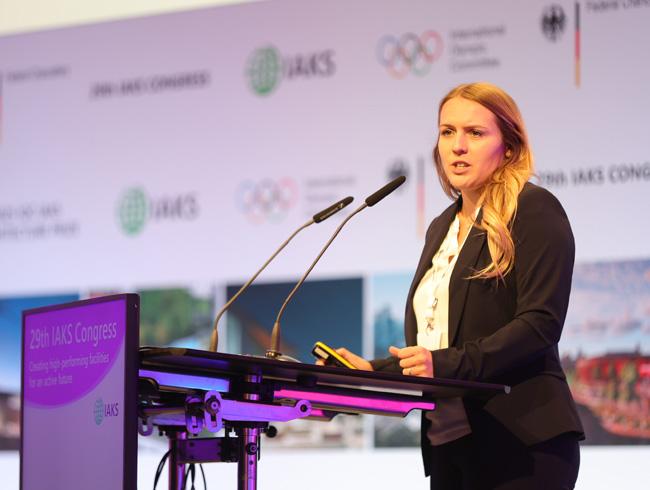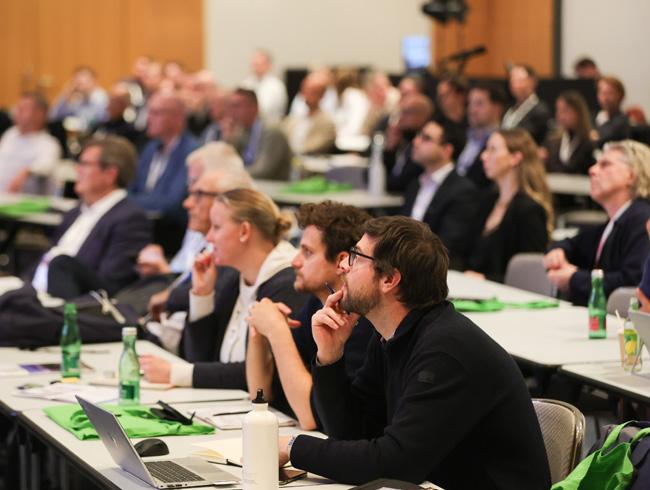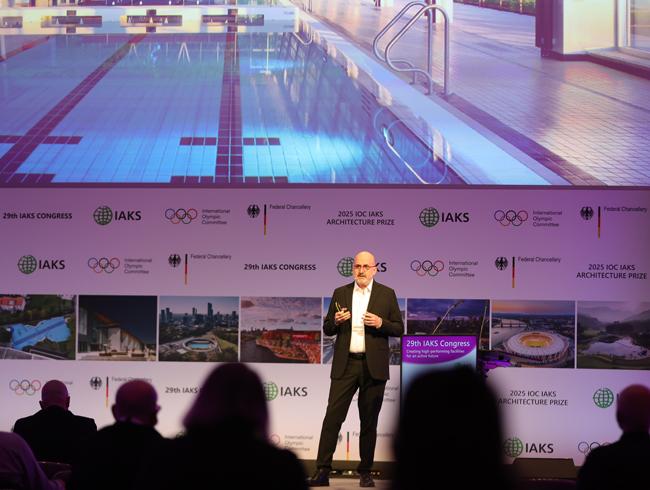
Rethinking sports facilities: changing climate, culture and users

The challenges faced by local authorities today – extreme weather events, lack of exercise, demographic changes – are also affecting sports and leisure facilities. The IAKS Congress 2025 impressively demonstrated just how much the role of these spaces is changing.
Offering excellent opportunities for exchanging new ideas and networking, the 29th edition of the IAKS Congress attracted almost 500 industry experts and delegations from 41 countries. Under the overarching theme of ‘Creating high-performing facilities for an active future’, international speakers illustrated how this can be put into practice. Innovative sports and leisure facilities were showcased, along with forward-looking approaches contributing to the development of active communities.
The IAKS Congress featured four stimulating days with high-profile speakers and inspiring presentations on such topics as ‘Strategies towards net-zero sports and leisure facilities’, ‘The public value and social return on investment of physical activity and recreation infrastructure’, ‘Sustainable public pools’, ‘The sports hall for the future’ and ‘Future-proof models for ice arenas.
Linking the exciting presentations throughout the congress, three trends point the way forward to a new generation of sports facilities.


Climate protection and climate adaptation are no longer marginal issues, but determining factors. Over the four days, the more than 45 international speakers unanimously agreed that sports and leisure facilities must do much more than just be energy efficient. It's a question of life cycle assessment, sequestered emissions, and the interplay between government, research, design and operation.
This took on more concrete shape in reports on trends in Scandinavia, among other places: Denmark and Norway demonstrated the way national competence networks ensure that sustainability, rather than remaining confined to flagship projects, is anchored in the everyday operation of hundreds of facilities. The approach combines ecological goals with social use, economic common sense and clearly defined standards. This makes sustainability an integrated process rather than a downstream technical issue.

The second recurring theme of the congress was the realisation that sustainable sports facilities are no longer purely technical construction challenges. Instead, they arise from the interaction between urban society, administrators, users and planners.
How this can be achieved is demonstrated by the Bürstadt Education and Sports Campus in Germany. This is where an outdated facility from the 1970s has been transformed into a vibrant campus that combines sports, education, health and social amenities. Particularly worthy of note is that the process began not on the drawing board, but with workshops, surveys and in-depth involvement of clubs, schools and the local population. The outcome is a place with a high level of everyday use, a wide range of activities and a clear local identity.
A look at Swiss school playground projects also clearly revealed that good planning starts with listening. Children and adolescents contributed decisive ideas to design, accessibility and varied use. As a result, open spaces have been created that serve as places of learning, exercise and socialising – robust, inclusive and adapted to local conditions.

The third main theme of the congress showed how sports facilities will have to perform dual and triple functions in the future. Municipalities require spaces that not only facilitate physical activity but can also respond to climate risks.
The analysis of multifunctional water retention areas illustrated this impressively: sports areas, which serve as basketball courts or meeting places in normal weather, can store water in the event of heavy rainfall and thus prevent damage to adjacent neighbourhoods. Examples from the Netherlands, Denmark and Germany showed how such areas can be designed, legally underpinned and safely operated. This approach broadens the understanding of sports infrastructure – towards a cornerstone of urban resilience.

The IAKS Congress 2025 communicated a clear message: sports facilities are no longer add-ons, but integral to the central future strategy of modern local authorities. They must be climate-friendly, socially effective, economically viable and architecturally appealing – all at the same time.
Whether net-zero strategies, the circular economy, ecological and social sustainability, integrated planning, inclusion, public value or social return: a common core emerged across all topics. Sports facilities are becoming locations that have an impact far beyond sport – as safe spaces, places of education and locations for social interaction. Those who design, build or operate them are helping to shape the future viability of municipalities and society.
“I found it a really enthralling event and made so many new contacts.”
Emma Bernstein, UK (Strategic Projects Lead, Sport England)
“Thank you for all of the work you put into organizing Congress. It was my first time, and it really was a special event and was very well run.”
Paul Fast, Canada (Principal, hcma)
“A big well done for a very successful 2025 IAKS Congress. A great week of learning, networking and socializing.”
Shaun Dawson, UK (Chief Executive, Lee Valley Regional Park Authority